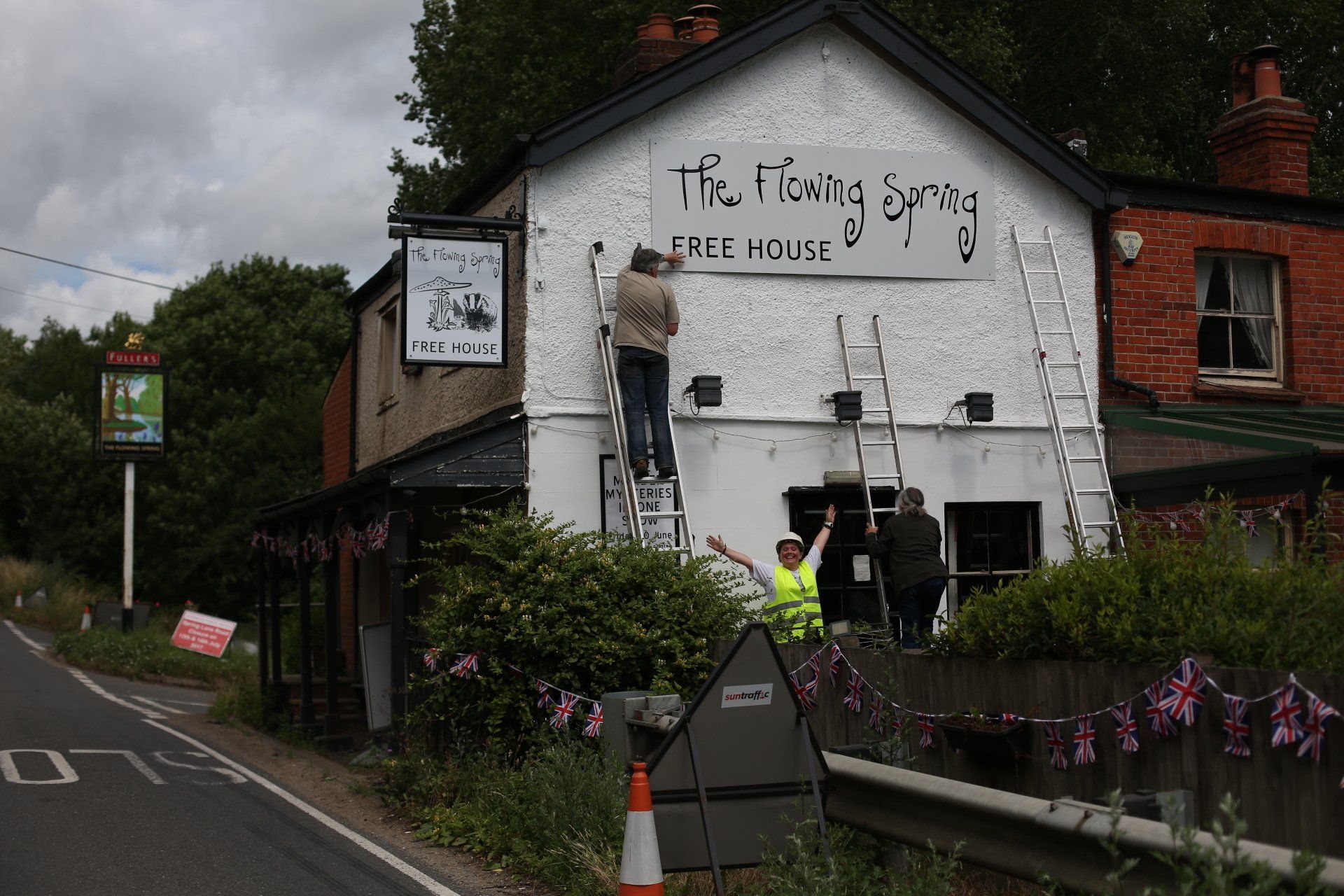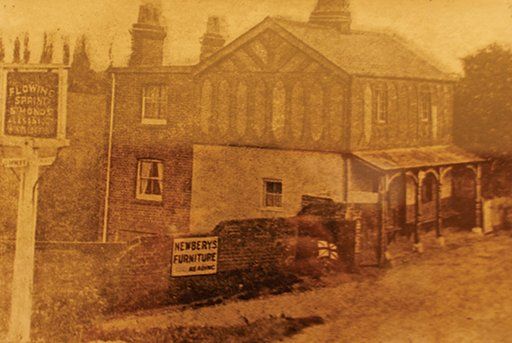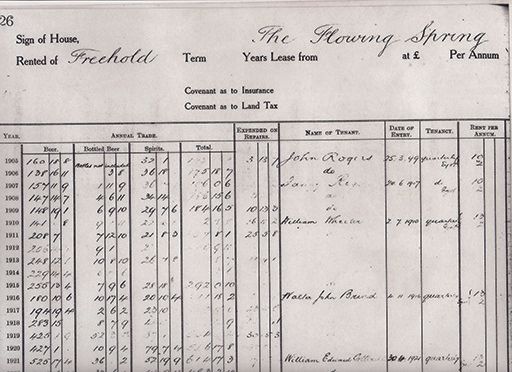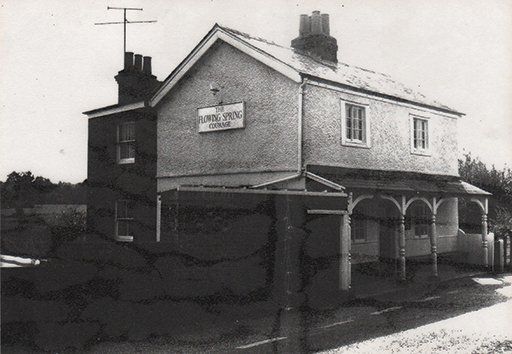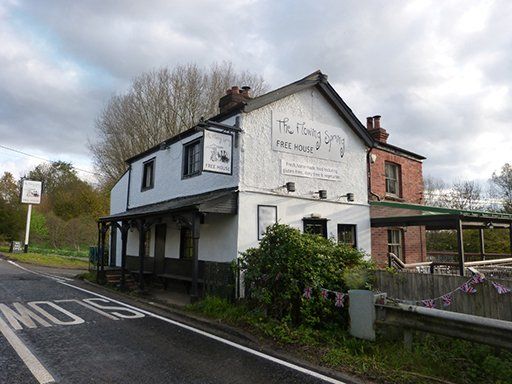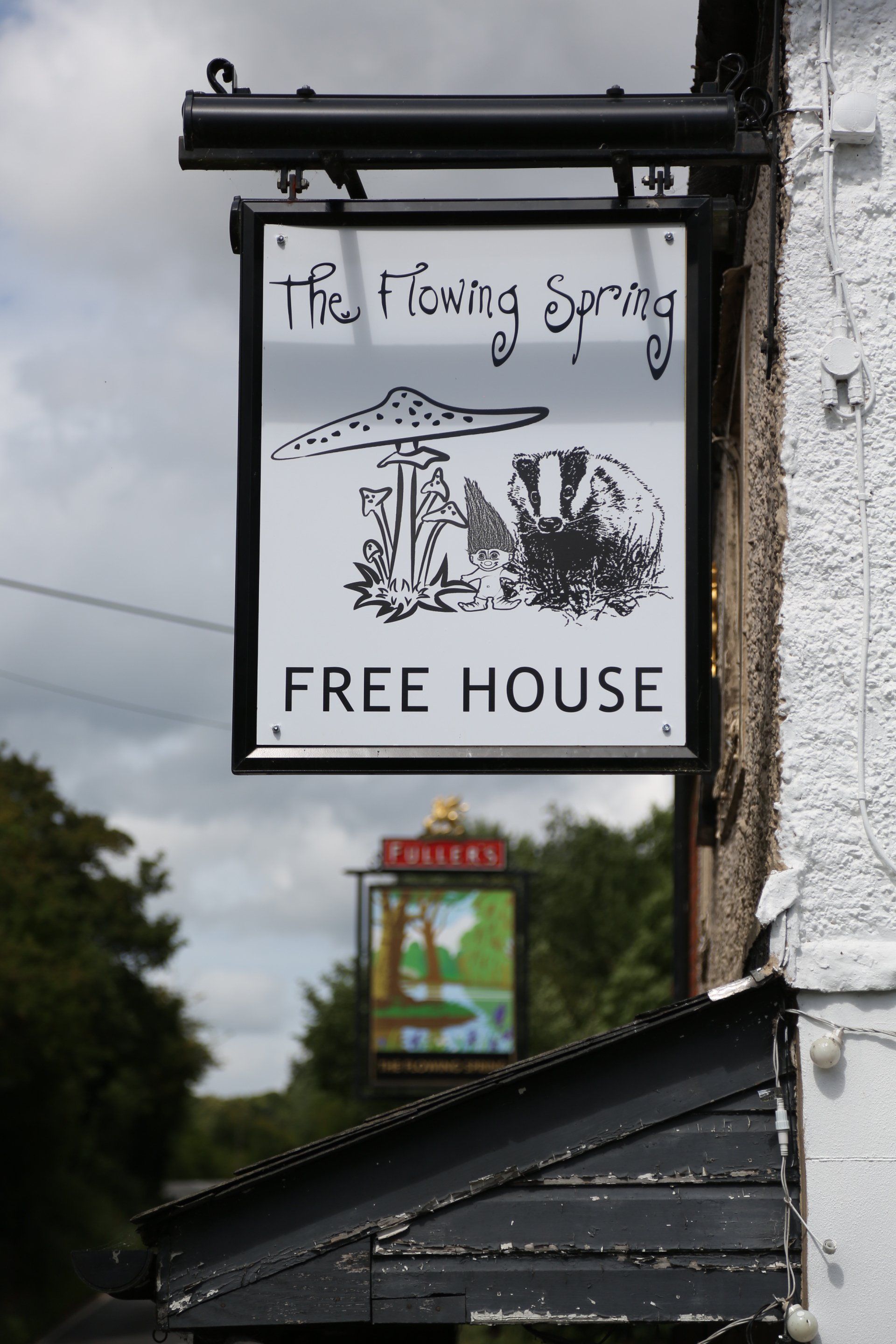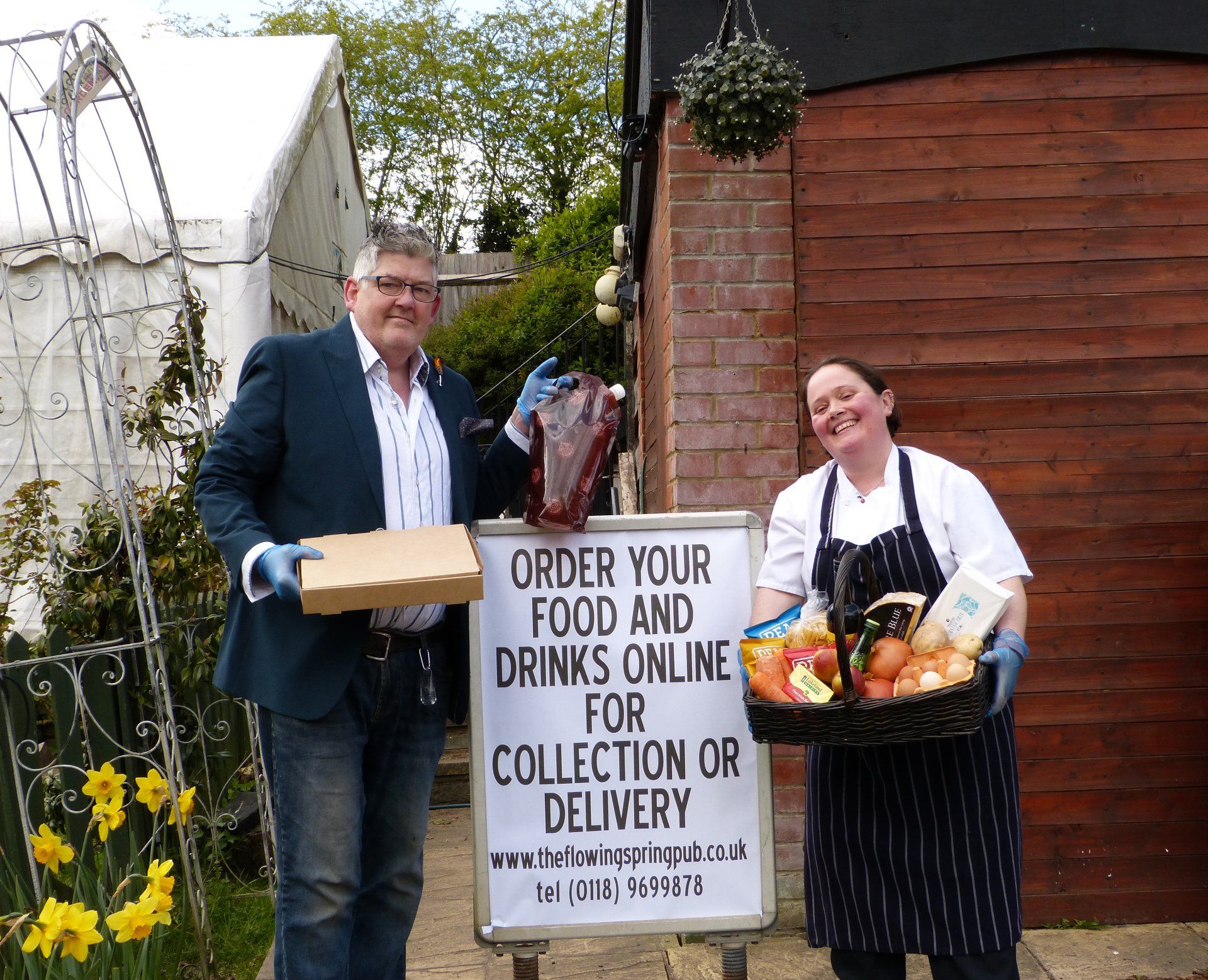Going
Eco-friendly
We love our pub, our countryside, our wildlife and we treasure it. So we want to do our bit to protect our environment and contribute to the broader climate initiatives of lowering carbon emissions and reducing waste.
So we're beginning to work through our plan which focuses on four main areas:
- Carbon Emissions and Energy
- Water
- Waste
- Impact on Bio-Diversity
This is a huge task and, with a limited budget, we can only do one small bit at a time. But every little contribution is definitely worthwhile.
We are signed up to the SME Climate Hub and working closely with the Low Carbon Hub with the help of Oxford Brookes University, Energy Solutions South Oxfordshire and OxFutures.
We will update this page each time we take a step forward in our plan.
29/7/21 Discussions continue with Low Carbon Hub. We will be visited in mid-August for a detailed energy assessment of the entire property
Carbon Emissions and Energy
This is a big one! It encompasses everything from the utilities we use here to make the business run to the impact of transportation of goods and services to our doors and the impact of all our waste on the environment. We will look at waste separately.
We are in discussions with Low Carbon Workspaces, a not-for-profit organisation supported by the European Regional Development Fund and the Government to analyse every part of the business that can potentially reduce its carbon footprint, from renewable energy to insulation and power usage.
Electricity
We currently have a contract with EDF for our electricity. EDF is Britain’s biggest generator of zero carbon electricity and one of the UK’s leading renewable energy companies, owning 35 wind farms – including two off-shore and 8 low carbon nuclear power stations.
However, we're researching other options, from green electricity suppliers such as Octopus, to installations here harnessing nature to generate our own power, ideally going off-grid!
The biggest issue with installations for our own renewable energy is cost. Our work with the Low Carbon Hub could potentially halve the costs.
Wind: We love the idea of a turbine. With the wind rushing across our neighbouring open fields it would be a great natural resource to capture. From Ecotricity (British designed and British made), we could have one which would generate between 5,000kwh and 20,000kwh per year, more power than we're likely to need! But the costs are over £30,000 and we would need to place it at least 150m from any residence. This means renting or agreeing a Wayleave Agreement with Phillimore Estates, the neighbouring landowner. But it could potentially work, especially if we signed up several of the local residents to share its energy. So we're looking into this.
Solar: The building's roof overlooking the car park is south-facing. It's the perfect spot to locate solar panels. Whilst we are looking into this with several suppliers and discussing eligibility for carbon-saving grants from the European Regional Development Fund for SMEs, we're not convinced the power generated through solar cells is as high nor efficient as wind. But the investment is likely to be significantly lower.
Water Source: We have a brook running round two sides of our land. We own parts of it. We've been investigating how we can exploit this water to create energy, even though it has little or no flow to it (the Environment Agency is not interested in dredging the brook so it now stagnates). Whilst it seems to fit the bill pretty well for a water source heat pump, these only work for heating, not generating electricity. Having looked into it further, this option is unlikely to work for us due to the fabric of the building, the need for substantially larger radiators throughout and the impracticalities of installing economical underfloor heating.
The same issues apply to ground source heat pumps.
Flood Water: We're on a natural flood plain! Five out of the 10 years we've been here we've experienced flooding, on average lasting 4 months over winter, and several in the summer lasting a few weeks. Wouldn't it be great to harness those thousands of tons of water pushing their way across our land on their way across the fields to Shiplake, re-joining the Thames? Unfortunately, because the flood water is not here all year round, it's pretty impossible to get a realistic hydropower feasibility study - and they're expensive with no guarantee it will work. Add to this the expense of a bespoke hydro system and it seems we have to regretably discard this option.
If you know any different, let us know!
Gas
Lighting
Heating
Building Fabric and Insulation
We believe the oldest part of our building dates back to the late 1700s. We have been told that the building appears on an Ordnance Survey map dated 1803. We believe some of the original building remains, particularly the cellar (our favourite room) and several of the rooms in the bar which have walls of wattle and daub. It has clearly been extended several times over the years, most recently in the late 1990s. It is unclear how long the Flowing Spring has been trading as a public house or what, if anything, it was before.
We have now traced back census records to 1841 when Elizabeth Goodwin was publican (born 1806). Interestingly, the 1851 census documents refer to the building as ‘Pool Spring’ when a 40 year-old Thomas Russell was publican, living here with his wife, four children and neice, all of whom were of school age. The census of 1891 gives the building the name ‘The Flowing Spring’ for the first time, with a John Rogers as Public House Keeper, living with his wife, Fanny, and five children plus Thomas Wheeler who was a lodger and Lime Maker. We understand brewers Hewett and Co of Waltham St Lawrence owned the pub from around 1840 and grew an estate of around 42 pubs at its peak. On 21 December 1899 Hewett's sold the premises to the much larger Reading brewery, H & G Simonds for £1298 including stamp duty. With the help of a builder working on a property in Shurlock Row, we now know exactly where Hewett & Co was located and Henry Hewett turns out to be quite an important figure in the village at that time.
In 1901, 10 people resided in this small building, with Albert Maskell named as Licensed Victualler. Apart from his family there were 2 farm workers, a rod cutter and a domestic servant living in.
Ten years later the census shows William Wheeler as Inn Keeper, living with his wife Ellen Ann. William was born in Nettlebed. An old document we have found (extract below) shows the pub's turnover as £237. The annual rent was just £13.
In 1916 the pub was run by Walter John Brind and, in 1921 by William Edward Cotterill.
Simonds brewery was later incorporated by Courage which eventually sold the premises to Fuller's in 1980. We have been given a fantastic folder of photos and commentary by Janice Tomlin who was the landlady here, along with her landlord husband Derek from 1981 to 1985. She says: "When we came here there was no mains water. We had an electric pump that pumped the spring water from under the pub. We had no gas or oil. We had a solid fuel stove in the cellar. There was no means of heating the kitchen and if we washed up after breakfast everything froze to the draining board in winter. When we ripped off the formica and boarding on the walls and knocked the previous tenant's private room into the bar we were lucky enough to find three working chimneys."
Nick and Hazel, tenants at the pub from 2010 purchased the freehold from Fuller's in June 2017. So, for the first time in the pub's history, it is a free house, no longer owned by a brewery. Being on the Thames flood plain it floods most winters, some times for up to four months but the couple continue to trade regardless.
In March 2020 the Covid-19 pandemic hit the country and pubs were forced to close. Over the three lockdowns imposed over the following year the pub remained open with its online shop, serving the community with takeaways and deliveries of meals, drinks and essentials.
The Flowing Spring still retains its charming, quirky character and continues to serve as a vital part of the community, bringing people together from far and wide.
Many thanks to everyone who has helped us compile this information, including David Woodward, Chairman of Eye and Dunsden Parish Council, Ron Wilson, Dave Smith and Janice Tomlin. If you have any information about the pub's history we'd love to hear from you. Please call Nick on 0118 9699878 or email info@theflowingspringpub.co.uk.
The Flowing Spring, Henley Road, Playhatch, Reading, Oxfordshire RG4 9RB

